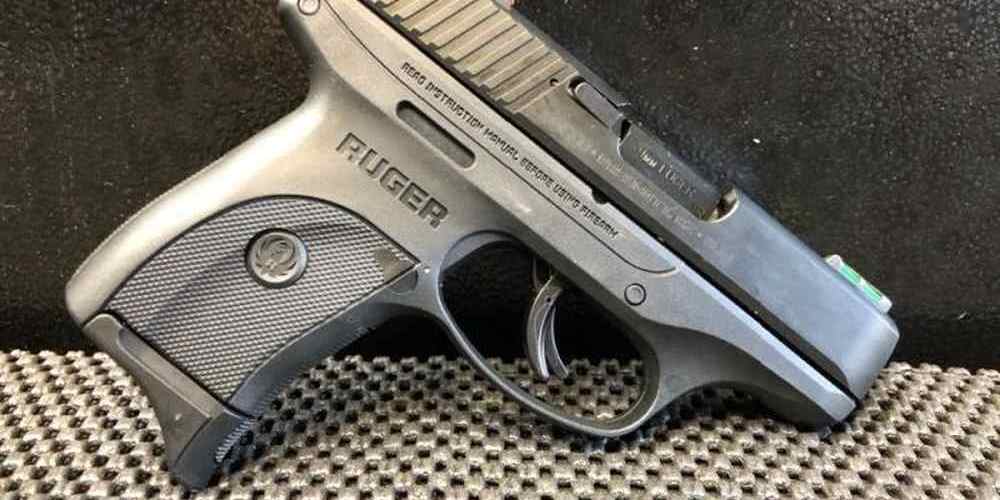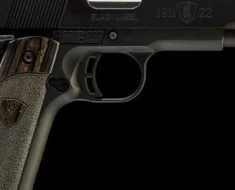“Understanding the legalities of semi-auto pistols for responsible ownership and carrying.”
State Laws Regarding Semi-Auto Pistol Ownership
When it comes to owning and carrying semi-auto pistols, it is important to be aware of the legal aspects that govern these firearms. Each state has its own laws and regulations regarding the ownership and carrying of semi-auto pistols, so it is crucial to understand the specific requirements in your state.
In many states, owning a semi-auto pistol is legal as long as you meet certain criteria. This may include passing a background check, obtaining a permit, or meeting other requirements set forth by the state. Some states have stricter regulations than others, so it is important to familiarize yourself with the laws in your state to ensure that you are in compliance.
Carrying a semi-auto pistol in public is another aspect that is heavily regulated by state laws. Many states require individuals to obtain a concealed carry permit in order to carry a semi-auto pistol in public. This permit may require individuals to undergo training, pass a background check, and meet other requirements set forth by the state.
It is important to note that some states have restrictions on where you can carry a semi-auto pistol, such as schools, government buildings, or other designated areas. Violating these restrictions can result in serious legal consequences, so it is important to be aware of the laws in your state regarding where you can and cannot carry a semi-auto pistol.
In addition to state laws, there are also federal laws that govern the ownership and carrying of semi-auto pistols. The National Firearms Act (NFA) regulates the ownership of certain types of firearms, including semi-auto pistols with certain features such as a barrel length of less than 16 inches or a shoulder stock. Individuals who wish to own these types of firearms must obtain a tax stamp from the Bureau of Alcohol, Tobacco, Firearms and Explosives (ATF) and comply with other requirements set forth by the NFA.
When it comes to carrying a semi-auto pistol across state lines, it is important to be aware of the laws in both your home state and the state you are traveling to. Some states have reciprocity agreements that allow individuals with a concealed carry permit from one state to carry in another state, while others do not. It is important to research the laws in each state you will be traveling through to ensure that you are in compliance and avoid any legal issues.
Overall, owning and carrying a semi-auto pistol comes with a great deal of responsibility. It is important to be aware of the laws and regulations that govern these firearms in your state and at the federal level. By staying informed and following the laws, you can ensure that you are a responsible gun owner and avoid any legal issues that may arise.
Concealed Carry Permits and Regulations
When it comes to owning and carrying semi-auto pistols, there are a number of legal aspects that gun owners need to be aware of. One of the most important considerations is obtaining a concealed carry permit. In many states, it is illegal to carry a concealed weapon without a permit, so it is essential to understand the regulations in your area.

To obtain a concealed carry permit, you will need to meet certain requirements set forth by your state’s laws. These requirements may include passing a background check, completing a firearms safety course, and demonstrating a need for carrying a concealed weapon. It is important to familiarize yourself with the specific requirements in your state to ensure that you are in compliance with the law.
Once you have obtained a concealed carry permit, it is important to understand the regulations surrounding carrying a semi-auto pistol. In many states, there are restrictions on where you can carry a concealed weapon, such as schools, government buildings, and certain public spaces. It is important to familiarize yourself with these regulations to avoid running afoul of the law.
Additionally, it is important to understand the legal implications of using a semi-auto pistol in self-defense. While many states have laws that allow for the use of deadly force in self-defense situations, it is important to understand the specific requirements for using a firearm in self-defense. It is important to remember that the use of deadly force should always be a last resort and that you should only use your firearm in self-defense if you believe that your life is in imminent danger.
In addition to understanding the legal aspects of owning and carrying a semi-auto pistol, it is also important to take steps to ensure that you are a responsible gun owner. This includes properly storing your firearm when it is not in use, keeping it out of the reach of children and unauthorized individuals, and following all safety protocols when handling your weapon.
It is also important to stay informed about changes to gun laws in your state and to stay up to date on any new regulations that may affect your ability to own and carry a semi-auto pistol. By staying informed and following the law, you can ensure that you are a responsible gun owner and that you are in compliance with all legal requirements.
In conclusion, owning and carrying a semi-auto pistol comes with a number of legal responsibilities. From obtaining a concealed carry permit to understanding the regulations surrounding carrying a concealed weapon, it is important to be aware of the legal aspects of gun ownership. By following the law, staying informed, and being a responsible gun owner, you can ensure that you are in compliance with all legal requirements and that you are able to safely and responsibly carry a semi-auto pistol.
Liability Issues in Self-Defense Situations
When it comes to owning and carrying semi-auto pistols, there are a number of legal aspects that gun owners need to be aware of. One of the most important considerations is the issue of liability in self-defense situations. While the use of a firearm in self-defense is generally considered legal, there are still potential legal consequences that gun owners need to be prepared for.
In many states, there are laws that govern the use of deadly force in self-defense situations. These laws typically require that the person using the firearm must have a reasonable belief that they are in imminent danger of death or serious bodily harm. Additionally, the use of deadly force must be necessary to prevent the harm from occurring. If these criteria are not met, the person using the firearm could potentially face criminal charges.
Even if the use of deadly force is deemed justified under the law, gun owners may still face civil liability for injuries or damages caused during a self-defense situation. This is particularly true if the person using the firearm is found to have acted negligently or recklessly. For example, if a gun owner fires their weapon in a crowded area and injures an innocent bystander, they could be held liable for the bystander’s injuries.
To protect themselves from potential liability in self-defense situations, gun owners should take steps to ensure that they are properly trained in the use of their firearm. This includes familiarizing themselves with the laws governing the use of deadly force in their state, as well as practicing safe handling and storage of their firearm. Additionally, gun owners should consider obtaining liability insurance to protect themselves in the event that they are sued for damages resulting from a self-defense incident.
It’s also important for gun owners to be aware of the legal implications of carrying a firearm in public. Many states have laws that regulate where and how firearms can be carried, including restrictions on carrying firearms in certain locations such as schools, government buildings, and private property. Violating these laws can result in criminal charges and potential civil liability.
In addition to understanding the legal aspects of owning and carrying semi-auto pistols, gun owners should also be aware of the potential consequences of using their firearm in a self-defense situation. While the use of deadly force may be justified in certain circumstances, gun owners should be prepared for the legal and financial ramifications that could result from using their firearm in self-defense.
By taking the time to educate themselves on the laws governing the use of deadly force and practicing safe handling of their firearm, gun owners can protect themselves from potential liability in self-defense situations. Ultimately, being a responsible gun owner means understanding and complying with the legal requirements of owning and carrying a semi-auto pistol.
Federal Regulations on Semi-Auto Pistol Modifications
When it comes to owning and carrying semi-auto pistols, there are a number of legal aspects that gun owners need to be aware of. One important area to consider is federal regulations on modifications to semi-auto pistols. These regulations are in place to ensure the safety and legality of these firearms.
The National Firearms Act (NFA) is a federal law that regulates the ownership and transfer of certain types of firearms, including semi-auto pistols. Under the NFA, any modifications made to a semi-auto pistol that affect its classification as a firearm must be approved by the Bureau of Alcohol, Tobacco, Firearms and Explosives (ATF).
One common modification that gun owners may be tempted to make to their semi-auto pistols is the addition of a bump stock. Bump stocks are devices that allow semi-auto pistols to mimic the firing rate of fully automatic weapons. However, the ATF has ruled that bump stocks are illegal under the NFA, as they effectively turn a semi-auto pistol into a machine gun.
Another modification that gun owners may consider is the addition of a suppressor to their semi-auto pistol. While suppressors are legal in many states, they are subject to strict regulations under the NFA. In order to legally own a suppressor for a semi-auto pistol, gun owners must submit an application to the ATF, pay a tax stamp fee, and undergo a background check.
It’s important for gun owners to understand that making unauthorized modifications to a semi-auto pistol can have serious legal consequences. In addition to potential criminal charges, gun owners who violate federal regulations on modifications to semi-auto pistols may also face fines, confiscation of their firearms, and loss of their right to own firearms in the future.
In order to stay on the right side of the law, gun owners should always consult with a qualified firearms attorney before making any modifications to their semi-auto pistols. An attorney can help gun owners navigate the complex web of federal regulations and ensure that they are in compliance with the law.
In conclusion, federal regulations on modifications to semi-auto pistols are in place to protect the safety and legality of these firearms. Gun owners should be aware of the potential legal consequences of making unauthorized modifications to their semi-auto pistols, and should always consult with a qualified firearms attorney before making any changes to their firearms. By following the law and seeking legal advice when needed, gun owners can enjoy their semi-auto pistols safely and responsibly.
Legal Responsibilities of Gun Owners in Storing and Transporting Semi-Auto Pistols
Owning and carrying a semi-automatic pistol comes with a set of legal responsibilities that gun owners must adhere to. These responsibilities include properly storing and transporting the firearm in accordance with local, state, and federal laws. Failure to do so can result in serious legal consequences, including fines, imprisonment, and the loss of the right to own firearms.
When it comes to storing a semi-automatic pistol, gun owners must ensure that the firearm is kept in a secure location that is inaccessible to unauthorized individuals, such as children or individuals prohibited from possessing firearms. This typically means storing the pistol in a locked gun safe or cabinet. Some states may also have specific requirements for how firearms must be stored, so it is important for gun owners to familiarize themselves with the laws in their jurisdiction.
In addition to storing the pistol safely, gun owners must also ensure that the firearm is transported legally. This includes transporting the pistol in a locked container or case, separate from any ammunition. Some states may also require that the pistol be unloaded during transport. It is important for gun owners to research and understand the laws regarding the transportation of firearms in their state to avoid any legal issues.
Failure to properly store or transport a semi-automatic pistol can result in criminal charges, such as reckless endangerment or unlawful possession of a firearm. These charges can carry significant penalties, including fines and imprisonment. In addition, individuals convicted of certain crimes may lose their right to own firearms altogether.
To avoid legal trouble, gun owners should take the time to educate themselves on the laws governing the ownership and carrying of semi-automatic pistols in their state. This may involve consulting with an attorney or contacting local law enforcement for guidance. Gun owners should also make sure to keep up-to-date on any changes to gun laws that may affect their rights and responsibilities.
In conclusion, owning and carrying a semi-automatic pistol comes with legal responsibilities that gun owners must take seriously. Properly storing and transporting the firearm in accordance with the law is essential to avoid legal trouble and protect the safety of oneself and others. By educating themselves on the laws governing firearms ownership and carrying, gun owners can ensure that they are in compliance with the law and avoid any potential legal consequences.





